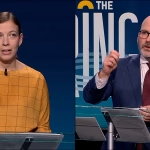The GBP/USD pair is struggling to gain momentum and remains range-bound in the mid-1.3000s, with a modest USD strength putting pressure on the pair. Speculations around the Bank of England’s potential policy easing are weighing on the British Pound, while the Federal Reserve’s decision to hold interest rates steady is helping the US Dollar maintain its strength near a two-month peak. The technical setup is favoring bearish traders, indicating the potential for further losses in the GBP/USD pair.
Last week, the GBP/USD pair closed below the 50-day Simple Moving Average (SMA) for the first time since August, signaling a bearish trend. Additionally, oscillators on the daily chart remain in negative territory, supporting the negative outlook for the pair. A break below the psychological level of 1.3000 could lead to further downside towards the 100-day SMA around 1.2945 and potentially to the 1.2900 and 1.2860-1.2820 support zones. On the other hand, a move above the 50-day SMA resistance at 1.3100 could trigger a recovery towards the 1.3155-1.3160 region and beyond.
The Pound Sterling (GBP) is the oldest currency in the world and the official currency of the United Kingdom. It is the fourth most traded currency in the world, with key trading pairs including GBP/USD, GBP/JPY, and EUR/GBP. The value of the Pound Sterling is influenced primarily by the monetary policy decisions of the Bank of England, with interest rates being a key tool in maintaining price stability. Economic indicators such as GDP, PMIs, and employment data also play a significant role in determining the value of the GBP.
Data releases related to the health of the economy, such as trade balances, can impact the value of the Pound Sterling. A positive net trade balance, resulting from strong exports, can strengthen the currency due to increased demand from foreign buyers. On the other hand, a negative trade balance can lead to a depreciation of the currency. Overall, economic data and monetary policy decisions are critical factors that drive the value of the Pound Sterling in the foreign exchange market.
In conclusion, the GBP/USD pair continues to face challenges as it remains range-bound and vulnerable to further losses. The technical setup supports a bearish outlook, while the Bank of England’s potential policy easing and the Federal Reserve’s decision to hold rates steady are influencing the pair’s movements. Traders should monitor key levels such as 1.3000 and 1.3100 for potential breakout opportunities in the GBP/USD pair. Economic indicators and monetary policy decisions will continue to play a crucial role in determining the future direction of the Pound Sterling in the foreign exchange market.









